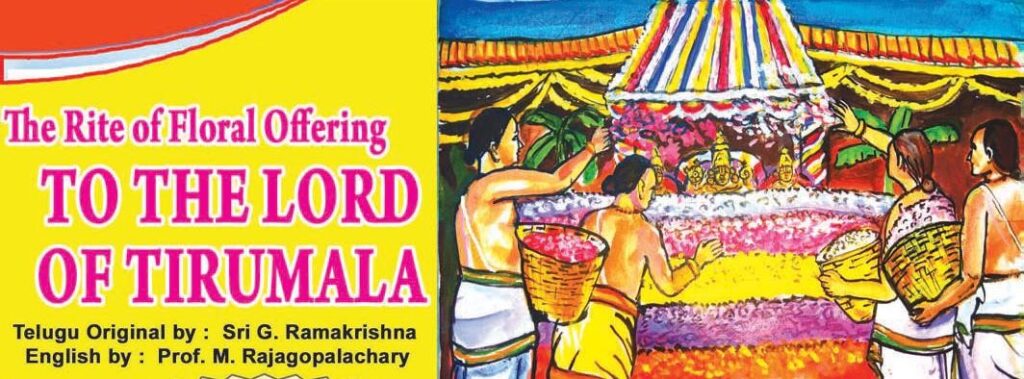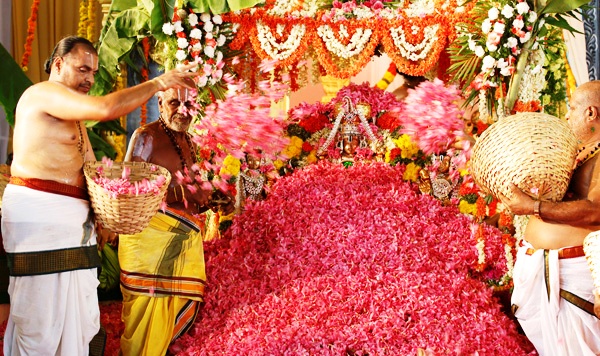Process of Pushpayagam India is known as the land of Vedas. People of this country yearn to realize God through virtuous deeds ordained by the Vedas. Idol worship is one of the significant duties prescribed by the Vedas. Our saints have given form, name, and auspicious attributes to the amorphous God of the Vedas and Read More
Tag: Pushpayagam
Pushpayagam to Padmavati Devi
Pushpayagam (Yagam with Flowers) in Tiruchanur Pushpayagam is performed to Sri Padmavati Devi in Tiruchanur. This is an annual festival that is performed the day after the completion of the annual Brahmotsavam on the asterism of Karthika masa, on the day after Panchami Theertham. After the daily pujas, Goddess Sri Padmavati Devi is seated on Read More


